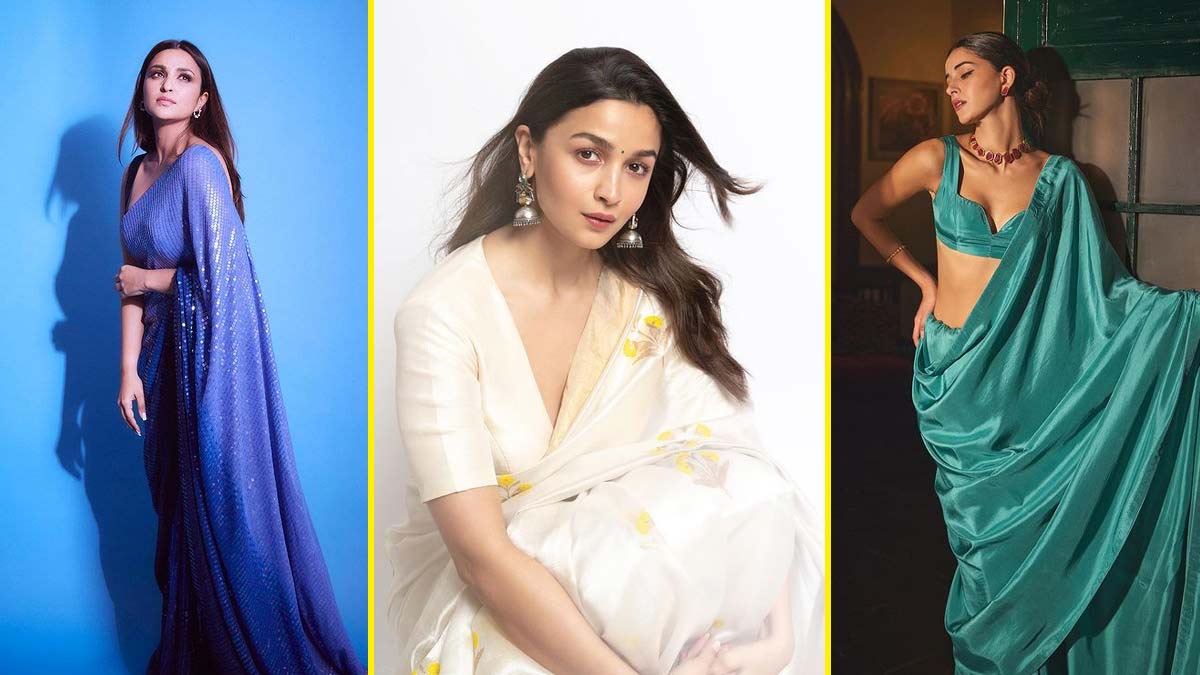Living
How Is Kochi Metro Still Clean?

We have a flawless behaviour when we step into our metro station
Text Credit: Shibul Pavithran
India has often been compared with places like Singapore, Germany and Japan, and have been regarded as the dirtiest and most shabbiest due to a thousand reasons. We have places where people spit, urinate, and lavishly litter without any regret. But there are a few places here, where we have noticed a different approach, irrespective of their age, gender and income, people behave in the most dignified and desirable behaviours. Indian’s have a very ethical and flawless behaviour when we step into our metro station, we do not spit, we do not litter, we do not bargain and we do wait patiently in queues.
Have you ever thought about, why we behave differently in metro? can this behaviour be replicated to other public places too? can our behaviour in metro station be a pioneer of change in across the whole country?

Human behaviour expert have always studied the impact of physical surroundings on human behaviour. They have established that physical locations are some of the most powerful signs to state of mind and behaviours. As Wendy Wood, professor of psychology and nueroscience at Duke university says, “even though people think they’re making choices, many of our repeated behaviours are cued by everyday environments”. Humans are like chameleons who have the ability to change their colours to suit the surroundings. We speak softly in libraries, and scream and shout in stadiums. As soon as an individual enters an environment, one derives a certain understanding and a meaning about that surrounding. It is this meaning that influences how we act in that situation. Who we are, what we believe in, what we do, are all greatly influenced by where we are.
What are the factors that contribute to providing a meaning to our Metro stations that all of us have a transformed behaviours when we step into a Metro station?

Most of our Metro stations are at a physical level that is different from the rest of the surroundings. Metros are either elevated or they are underground in India. A Metro station invokes a ritual of stepping out of the ordinary world into a “sacred” space. The same level difference adds to a feeling of exclusivity and spirituality to our places of worship too.
Think of your first Metro ride or your first plane ride or your first visit to a fancy and glamorous mall. The sparkling technological marvels that are our Metros, our airports, our high-end malls generate an emotion of awe and wonder. This is a curious emotion—one that may not seem like it has an evolutionary foundation.

Wonder is an emotion that’s triggered when current mental situation are not sufficient to understand a situation—something that requires adjustment and new learning. Metro is associated with a city, this shared emotion becomes a feeling of pride not just among the users of the Metro but also among all the citizens of the city. This pride leads to a sense of collective ownership of and collective responsibility for the Metro among the ordinary citizens of the city.
The emotional high and lack of established norms makes the creation of new social norms easier in the early stages of the Metro. In this state, Metro users are far more susceptible to following instructions from authorities—to queue up, to give way, to not litter. Over a period of time, these behaviours become the new social norm of the place. No wonder that Kochi Metro, even months after it started services, remains cleaner than the rest of the city.
Policy makers are working hard to make more of our cities “smart” and chief executive officers are keen to inculcate new behaviours in their organizations. All of them have a lot to learn from the context changes, the rituals, and emotions around our Metro stations that have managed to transform the public behaviours of a large number of people.
Art
Navratri 2024: Celebrating the Nine Colours and Their Significance

Navratri, the festival that spans nine nights, is one of the most auspicious and widely celebrated festivals in India. Dedicated to the worship of Goddess Durga in her nine forms, each day of Navratri holds special significance, marked by a distinct color that carries deep spiritual and cultural meaning. As we prepare for Navratri 2024, let’s explore the nine colors associated with each day, their significance, and how they inspire devotion, positivity, and harmony.
Day 1: Yellow

On Thursday, embrace the uplifting energy of yellow as you celebrate Navratri with optimism and joy. This warm and cheerful color symbolizes happiness and radiates positivity, keeping you in high spirits throughout the day.
Day 2: Green

On Friday, wear green, a color that represents nature, growth, and harmony. It evokes a sense of peace and serenity, while also symbolizing new beginnings. Let the vibrant energy of green invite tranquility and the blessings of the Goddess into your life.
Day 3: Grey

Saturday calls for the subtle sophistication of grey. This balanced color keeps you grounded and calm, symbolizing composure and understated elegance. It’s perfect for those who want to participate in Navratri with grace while making a refined style statement.
Day 4: Orange

On Sunday, adorn yourself in the vibrant hue of orange. This color embodies warmth, exuberance, and positivity. Wearing orange during Navratri invokes an upbeat energy, bringing vitality and a lively spirit to your celebrations.
Day 5: White

Start your Monday with the purity and serenity of white. Associated with innocence and spiritual clarity, this color invites inner peace and helps you connect with the divine blessings of the Goddess, offering a sense of security and calm.
Day 6: Red

On Tuesday, red takes center stage, symbolizing passion, love, and strength. As one of the most auspicious colors, red is often offered to the Goddess in the form of a Chunri. Wearing red fills you with energy, vigor, and the vibrant spirit of Navratri.
Day 7: Royal Blue

Wednesday’s color is royal blue, representing elegance, richness, and tranquility. This deep, vivid shade of blue exudes confidence and sophistication, making it an ideal choice for those who want to celebrate Navratri with style and grace.
Day 8: Pink

On Thursday, don the charming hue of pink, a symbol of universal love, affection, and harmony. Pink is a color that adds a soft touch of warmth and approachability, making it perfect for creating a loving and joyful atmosphere during the festivities.
Day 9: Purple

On the final day of Navratri, purple takes the spotlight. Associated with luxury, nobility, and grandeur, purple invites opulence into your life. Wearing this regal color while worshipping Navdurga bestows blessings of prosperity and richness, making it the perfect way to end your Navratri celebrations.
Luxury
Cartier’s New High Jewellery Collection is a Love For The Wild

In 2021, the American Museum of Natural History in New York presented Beautiful Creatures, an exhibition showcasing some of the most eccentric jewellery designs of the past century. One standout piece was the iconic crocodile necklace of Mexican actress María Félix, a loyal Cartier patron. Félix, renowned for her bold sense of style, famously strolled into Cartier’s Paris store in 1975 with her pet crocodile, requesting a necklace in its likeness. Cartier delivered, crafting two intertwined crocodiles encrusted with over a thousand emeralds and yellow diamonds. For Félix, crocodiles symbolized freedom, an embodiment of the spirit she associated with Mexico’s Golden Age of cinema.

Fast forward to today, and Félix’s wildest dreams seem to have come to life at Cartier’s latest high jewellery collection, Nature Sauvage, previewed at the historic Kursalon Hübner gallery in Vienna. Among the star pieces is the Koaga necklace, a masterful creation where a zebra clasps an emerald-cut diamond and a 6.25-carat pear-shaped rubellite in its mouth. The zebra’s form is exquisitely rendered in alternating onyx stripes and pavé diamonds, making the creature feel almost lifelike.
The relationship between animals and jewellery has deep mythological roots, often glorified through rituals and symbolism. In ancient Egypt, scarab beetles were worn as earrings to signify respect for life’s cyclical nature. Meanwhile, in Hellenistic Greece, gods and goddesses took on the forms of winged creatures in adornment. So, what is it about animal-themed jewellery that continues to captivate us? According to Amanda Triossi, a jewellery historian based in Rome, the allure lies in our primal instincts: “Wearing wild animals like panthers or tigers gives one the sense of having conquered them. It’s empowering, as if you inherit the animal’s strength and attributes.”

Cartier captures this essence beautifully in its Amphista necklace. Featuring two intertwined snakes with diamond scales set with emeralds, their heads adorned with kite-shaped diamonds, the necklace echoes ancient Chinese philosophy’s yin-yang balance. The pièce de résistance? Nine octagonal Colombian emeralds, weighing a total of 14.72 carats.
Triossi also notes that many historical heroes are often depicted draped in the skins of animals they’ve vanquished, a symbol of triumph. Today, jewellery transforms that symbol into something precious and eternal—animal skins reimagined in imperishable materials.

Later that evening, at a celebration held at Vienna’s Kunsthistorisches Museum, the largest in Austria, the enchantment of Cartier’s collection was heightened. The museum’s octagonal domes featured paintings of animals dancing with angels, setting the stage for a magical night. Guests were greeted by masterpieces such as Rembrandt’s Self-Portrait and Caravaggio’s Madonna of the Rosary, alongside Cartier page boys in their signature red hats. The evening’s soundtrack, a seamless blend of Bach and Kygo, was curated by DJ Gillian Sagansky, lending a modern twist to the classical ambiance.
The following day brought another cultural adventure—a visit to Otto Wagner’s Villa, a stunning summer palace designed by the famed architect. The paintings adorning the villa’s walls depicted animals in various forms—some caught in purgatory, others wandering the biblical bardo, with alligators restlessly emerging from swampy landscapes.
Luxury
Indian Craftsmanship Meets Italian Savoir Faire : Rahul Mishra x Tod’s

Quiet luxury was expected to dominate for a while, with many predicting that the return of bold, extravagant fashion would take its time. However, maximalism seems to be making a swift comeback, especially in the realm of designer collaborations. Hot on the heels of the vibrant, print-heavy H&M x Anamika Khanna collection, another limited-edition line has arrived, celebrating opulent luxury: Rahul Mishra x Tod’s.
As part of Tod’s T-Factory project, which features exclusive collaborations with creative innovators, this marks Indian couturier Rahul Mishra’s debut in the international accessories space.

Mishra is a true ambassador of Indian design. Along with his wife Divya Mishra, he leads his eponymous label, which has brought the essence of India to the global stage in remarkable ways. A regular at Paris Fashion Week and the first Indian designer to showcase at Paris Haute Couture Week, his creations have adorned celebrities like Zendaya and Mark Zuckerberg, and have graced magazine covers in South Korea, China, and Europe. With such a path-defining legacy, it’s no surprise that Mishra and his visionary label were Tod’s natural choice for their first-ever Indian collaboration.
Mishra describes this collaboration as a beautiful fusion of “Italian craftsmanship serving as the canvas for Indian vision.” Tod’s iconic Gommino loafers and mules, along with the Di Bag and T Timeless shoulder bag, have been reimagined with intricate resham embroidery, crystals, and sequins—all meticulously hand-embroidered at Mishra’s atelier in Noida. “It was a technically challenging process that took time to perfect. I can confidently say these are some of the finest bags and shoes you’ll ever witness, in terms of craftsmanship and longevity. Such pieces are forever,” Mishra proudly shares.

Crafted entirely between India and Italy, the limited-edition pieces from this collection are a true love letter to the artisanal heritage of both nations. “There’s a beauty in the teamwork here,” Mishra explains. “We received raw materials from Italy and worked on integrating our embroideries seamlessly into their leather. The pieces were then sent back to Tod’s, where they transformed them into stunning, three-dimensional products. In that sense, it’s been a genuine collaboration between Italy and India.”
Mishra firmly believes that the future of global design will be shaped by a global Indian aesthetic. “Just as French, Italian, British, and Japanese designs are now seen as universal,” he explains. This collaboration marks a significant step in advancing that narrative. “When you push the boundaries of ‘handmade in India’ to be respected at the pinnacle of luxury, everything else will naturally follow,” he emphasizes.
-

 Style11 months ago
Style11 months agoBridal Guide : Best Looks of Radhika Merchant Ambani
-

 Fashion1 year ago
Fashion1 year agoMost Discussed Ajrakh Saree of Alia Bhatt
-

 Entertainment1 year ago
Entertainment1 year agoBridal Bliss : All Bridal Looks of Swasika Vijay
-

 Movies1 year ago
Movies1 year agoA Nostalgic Journey Through Love &Cinema : Best Bollywood Romantic 90s Movies
-

 AD8 months ago
AD8 months agoPopular Curtain Fabrics to Consider for Your Home
-

 Fashion1 year ago
Fashion1 year agoMajor Denim Trends You Need To Know in 2024
-

 Events9 months ago
Events9 months agoBest of Fashion Looks : Diya Krishna Wedding
-

 Events8 months ago
Events8 months agoThe L’Oréal Paris Show at Paris Fashion Week 2024




























